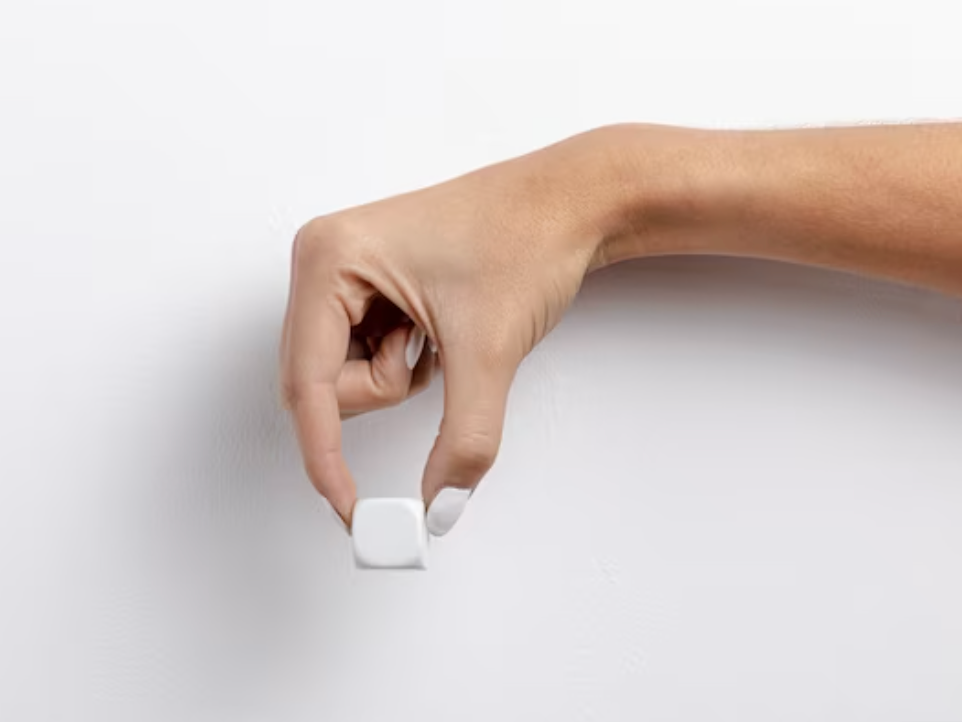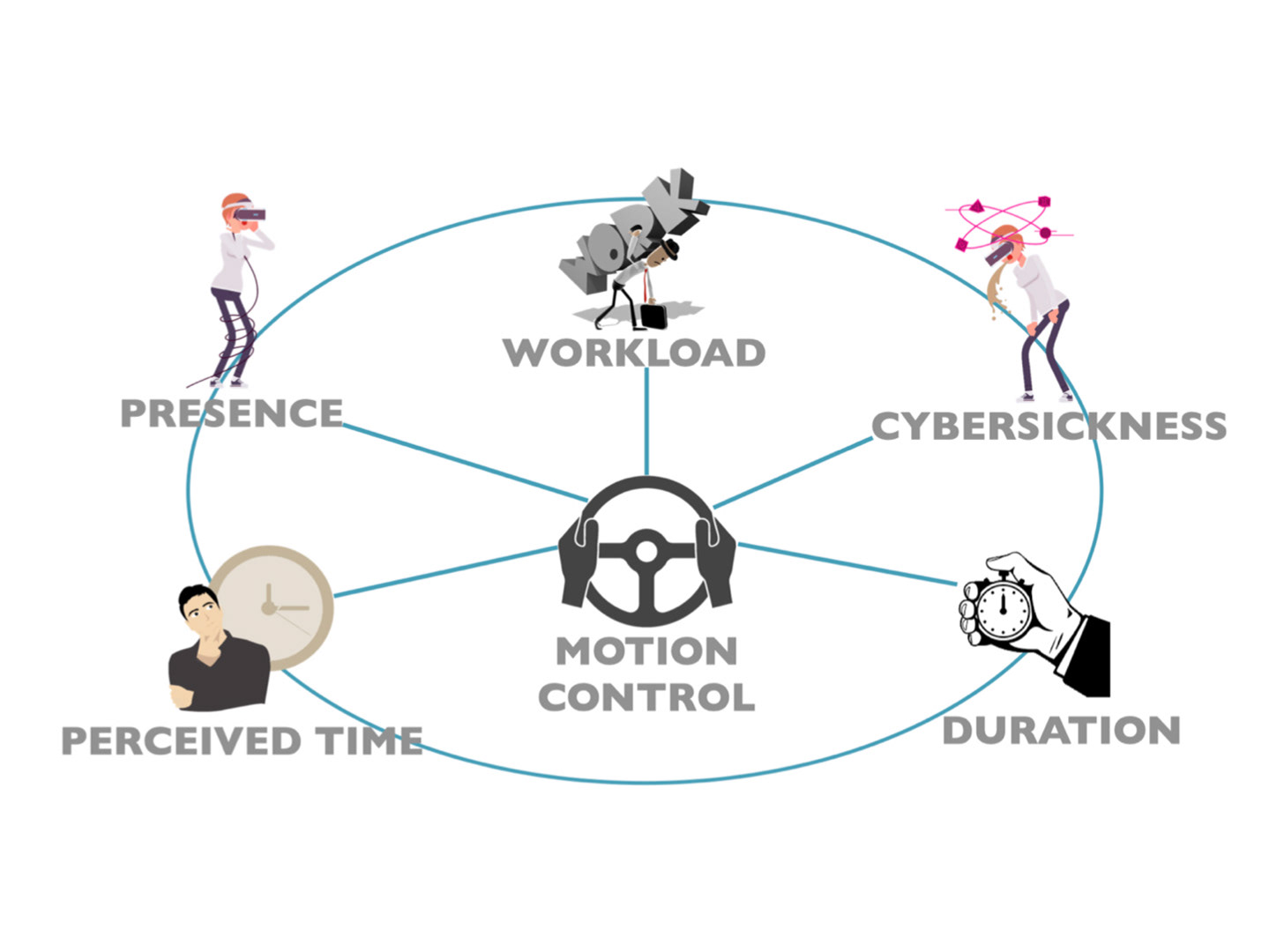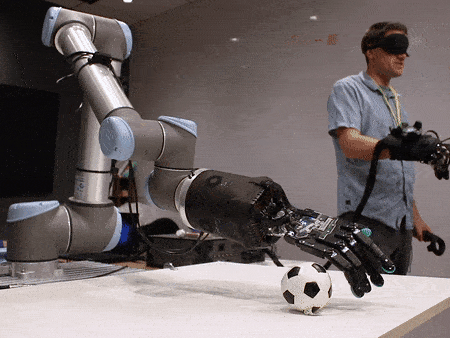Goal: evaluate the efficacy of auditory, visual, and cognitive distractions as countermeasures against cybersickness in VR.
We conducted a between-subjects study, manipulating the presence, sensory modality, and nature of periodic and short-lived (5-12 seconds) distractor stimuli across 4 experimental conditions: (1) no-distractors (ND); (2) auditory distractors (AD); (3) visual distractors (VD); (4) cognitive distractors (CD). Two of these conditions (VD and AD) formed a yoked control design wherein every matched pair of ‘seers’ and ‘hearers’ was periodically exposed to distractors that were identical in terms of content, temporality, duration, and sequence. In the CD condition, each participant had to periodically perform a 2-back working memory task, the duration and temporality of which was matched to distractors presented in each matched pair of the yoked conditions. These three conditions were compared to a baseline control group featuring no distractions. We discuss the effectiveness of distractions as countermeasures against cybersickness in VR.

Path of exploration in the virtual city

A landmark in the virtual city










